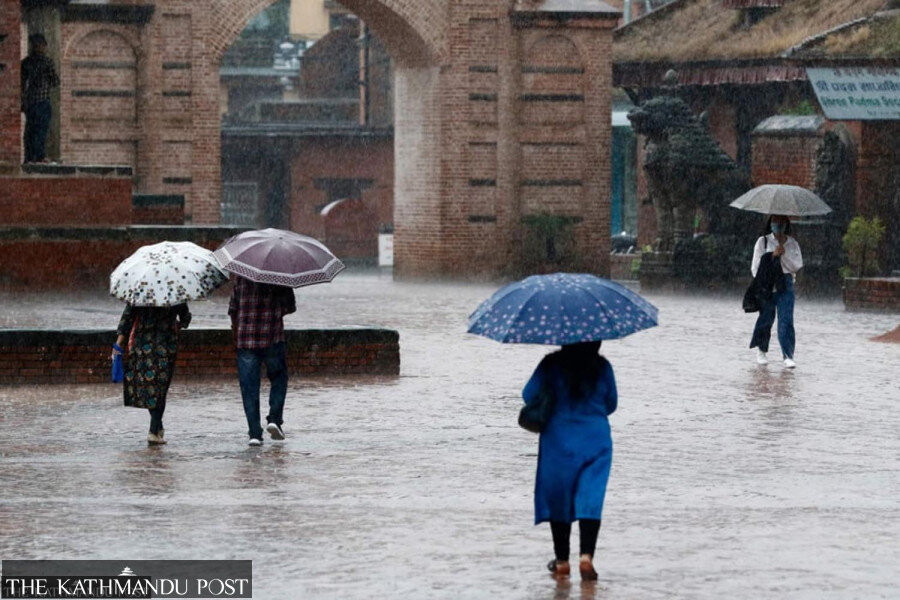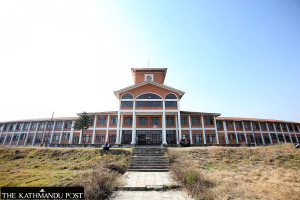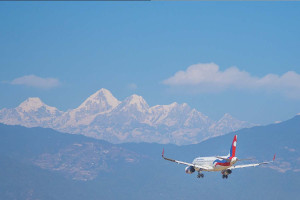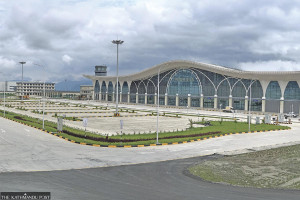Editorial
Invest in forecasting
Widespread loss of life and property from water-induced disasters must be prevented at any cost.
This year’s Dashain was marked not only by political uncertainty but also incessant late-monsoon downpour. But amid this gloom, people could still feel the government’s presence, as state bodies effectively disseminated weather-related information to prevent the loss of lives and property. Disaster preparedness was also on track. As a result, Nepal reported far less in losses this year compared to the damages during previous monsoons. Yet challenges remain, given significant changes in rainfall patterns and limited resources in the only body handling weather forecasts, i.e., the Department of Hydrology and Meteorology (DHM). Mitigating the impact of monsoon-related disasters and shifting rainfall patterns calls for a long-term strategy, which includes drastically enhancing the department’s capacity.
Even as the DHM has been pivotal in providing accurate rainfall and flood forecasting, the body is short of adequate human resources, mainly localised experts, to disseminate accurate forecasts in different parts of the country; a centralised weather forecast system may not be of much use to those living in more remote parts of the country. Hydrologists at the department also bemoan the paucity of infrastructure to carry out their work. Nepal has around 500 weather observation stations (400 automated) and around 250 hydrological observation stations (200 automated). But the country needs double the number of these stations to carry out smooth forecasts.
That is not all. Many countries are leveraging the latest technologies, including Artificial Intelligence and machine learning in their weather forecast systems and seamlessly delivering faster and accurate localised information. For instance, AI tools are helping improve early warning systems in Ethiopia, a least developed country like Nepal, and in mapping images using deep learning for climate resilience in the Caribbean region, which is as vulnerable to climate risks as Nepal. But Nepal is only taking baby steps in this direction, with efforts limited to testing the AI-powered warning system in landslide-prone areas.
Separately, due to high expenses related to the study and forecast of complex weather systems with the use of advanced meteorological technologies, as well as a lack of data on upper atmospheric conditions and weather conditions in the Himalayan region, it has become difficult to understand how weather systems are evolving. Moreover, Nepal’s complex topography makes it doubly difficult to deliver accurate rain forecasts.
Climate change-induced erratic rainfall patterns and delayed monsoons are the new norm. Therefore, an effective warning system has become vital. Nepal’s National AI Policy, 2025, aims to adopt AI-based weather forecasting. This is a good start. But the policy shouldn't be limited to paper. Hydrologists also emphasise the importance of transforming all-manual observation stations into automated ones, which should be done by allocating sufficient funds and collaborating with private partners.
There is also no alternative to embracing latest tools, which in turn could help the department disseminate more real-time, localised data. A country’s ability to protect its citizens from water-induced disasters largely depends on the health of its forecast system. Given the potential of devastating damages in both lives and property from climate-induced events, this is one area worth investing in. Every rupee spent in the sector will save money and lives many times over.




 16.12°C Kathmandu
16.12°C Kathmandu














